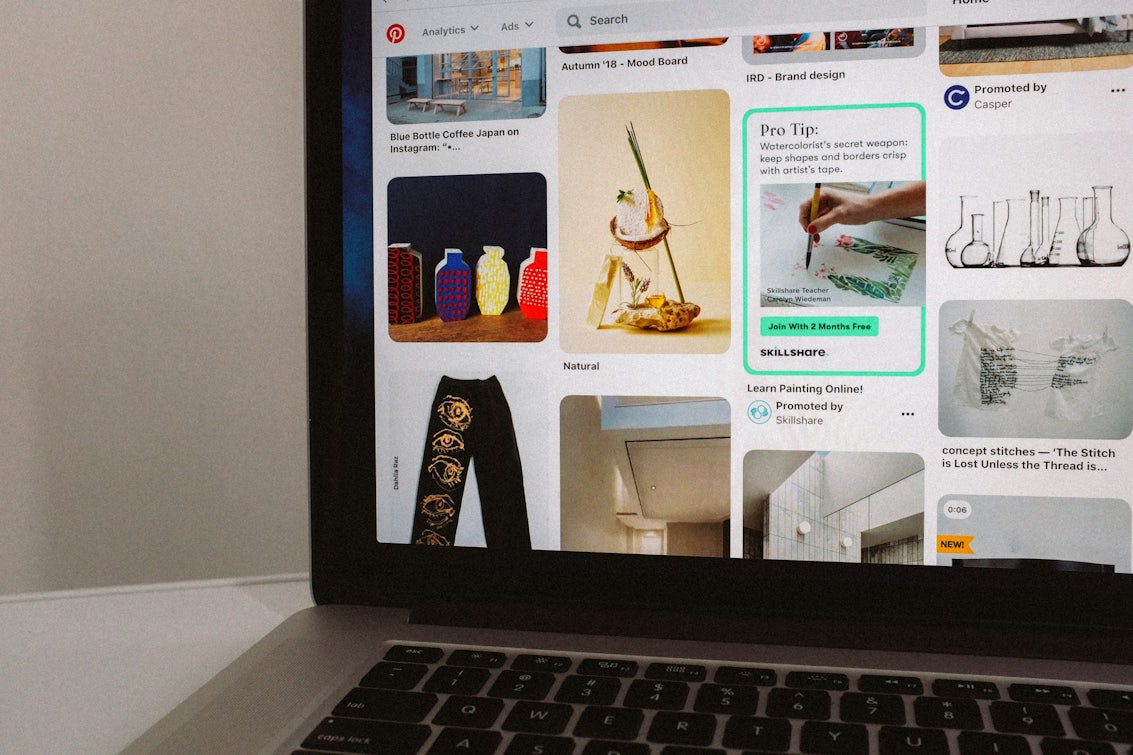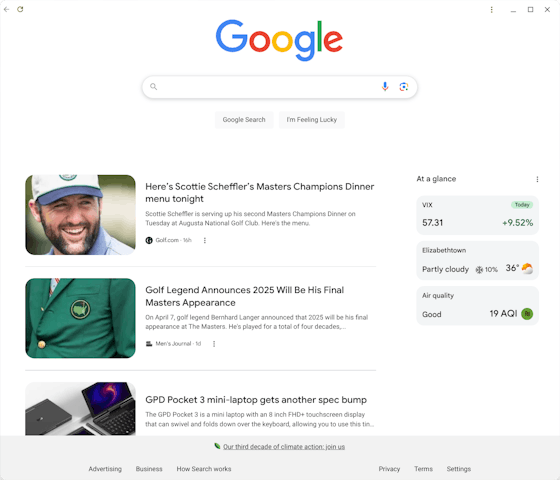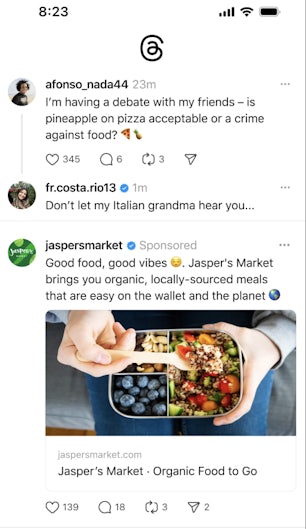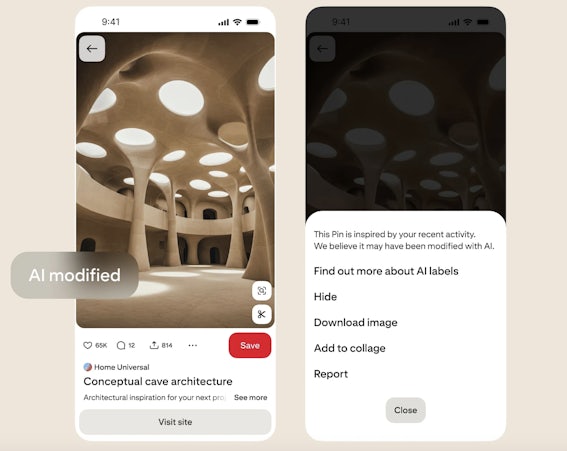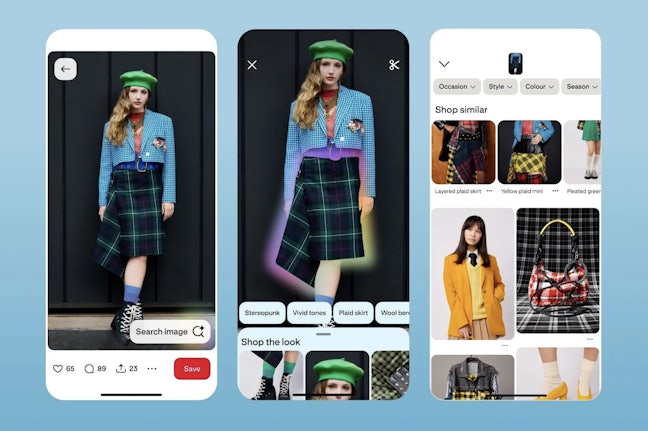The sun is shining, Winter has fled, and the paid media landscape continues to warm up as Summer approaches. With updates from Google, Spotify and most Paid Social platforms, it’s as important as ever to stay informed to make the best of the changes.
Read on to find out about…
- Google is bringing the Discover Feed to desktop
- Less healthy food ads ban delayed once more
- Google AI Max for Search Ads
- AI Mode search 'open-to-public experiment' on Google
- Threads ads enabled by default in Meta Ads Manager
- Pinterest journeys are changing
- AI Label
- Native Image Search
- Google announces new features for Video & YouTube ads
- Spotify introduces 'Ad Exchange'
- What's on the horizon? (Other updates)
Google is bringing the Discover Feed to desktop
The Discover Feed highlights information from around the web directly on the Google app. Blogs, videos, articles, and trackers (such as stock prices or game scores) relevant to a logged-in user’s search history appear on the feed without requiring a search to be conducted.
Content can be managed similarly to a social media feed. Users can follow websites to get up-to-date information directly and throughout the day. They can also show interests in specific topics, articles or publishers by providing Google with feedback on the content displayed.
The Discover Feed has been available only on mobile devices and has limited geographic availability.
On iOS, the Discover Feed appears automatically under the Search bar. On Android, it is in a separate tab. And on desktop, official documentation still suggests it is not at all available.
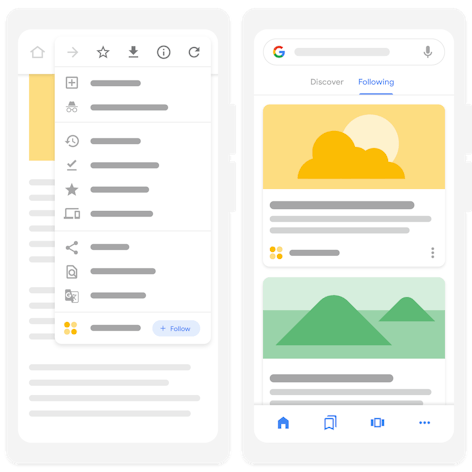
Last month, Google announced that they were bringing Discover to desktop. And recently, users in Australia and New Zealand have been spotting a version of this feature on their desktop search pages. A user in the USA has seen it, but only on one of his accounts, suggesting that this feature is still in testing and may see broader distribution as time goes on.
What does this mean for you?
This update will give you direct access to users at a time when publishers continue to lose traffic to AI overviews.
Since the personalised feed appears before any search is conducted, traditional SEO may lose out to a more holistic strategy.
Make sure the content on your website is well written, has a catchy title and hook, and has visually intriguing images. While all content indexed by Google is eligible to serve in the Discover Feed, following best practices can help make content more relevant for users and more likely to serve.
Less healthy food ads ban delayed once more
This proposed UK regulation was due to come into effect in October 2025. This was after multiple delays since its proposal in 2024. On the 22nd of May, a new delay was announced, pushing its effects back until January 2026.
This latest push was due to concerns around the wording of the law, not allowing brand advertisements from sellers of these items, which went against the intent to ban product ads only.
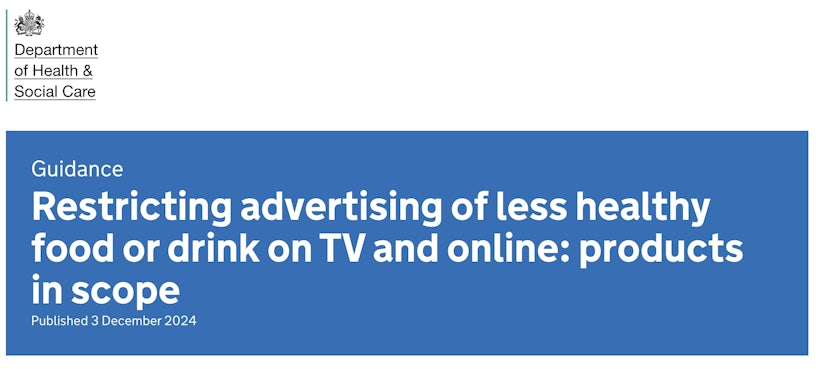
The Less Healthy Food Advertising Restrictions is a proposed UK regulation intended to give practical effect to the 2022 Health and Care Act. Under this regulation, there will be
- 21:00 (9 pm) cut-off to unhealthy food advertising on broadcast TV (including all on-demand services), and
- Complete cut off on online advertising for unhealthy food.
What does this mean for you?
The continued delays mean that advertisers promoting HFSS foods (high in fat, salt and sugar) can continue to run ads on all channels as usual until at least 2026. When this regulation comes into effect, ads featuring a product will not be allowed online, but other Brand-focused ads will remain unaffected. This raises several questions regarding a grey area between brands and their relationships to products. For instance, Mars has a diverse portfolio of products, with the majority of them being classed as HFSS foods. How is Mars supposed to do a brand-focused ad without that association? These are a few nuances to keep in mind.
Google AI Max for Search Ads
Early this month, Google announced the launch of AI Max for Search Ads. This is a bundle of AI optimisation tools which you can enable in your search campaigns to, according to Google, optimise performance.
Once it’s activated, it does three main things:
- Search term matching: The AI extends your keyword matching into relevant, high-performing queries your current keywords might miss.
- Text customisation: Rebrands the former Automatically Created Assets (ACA) tool. This dynamically generates new headlines and descriptions based on your landing pages, existing ads, and keywords. The update is coming up automatically on the 27th of May, and the legacy ACAs will not be compatible with AI Max.
- Final URL expansion: Sends users to the most relevant pages on your site based on query intent. It finds the page on your website that is most relevant to the user, and automatically applies that as the landing page for your ad.
These features are all enabled by default in AI Max for Search campaigns. Once the 27th of May 2025 deadline is passed, these will only be available to AI Max campaigns.

What does this mean for you?
You can ‘upgrade’ your campaigns to AI Max, or continue using legacy assets while they are available, without access to edit them.
AI Mode search ‘open-to-public experiment’ on Google
Google has introduced AI Mode Search as an open-to-the-public experiment in Google Labs. This is a chatbot function that expands on Google’s existing AI overviews in Search. Instead of being an addition within a SERP, it has been spun out into a separate function. Instead of using SEO to rank results, the modified version of Gemini 2.0 curates a personalised results feed based on the query and the user making it.
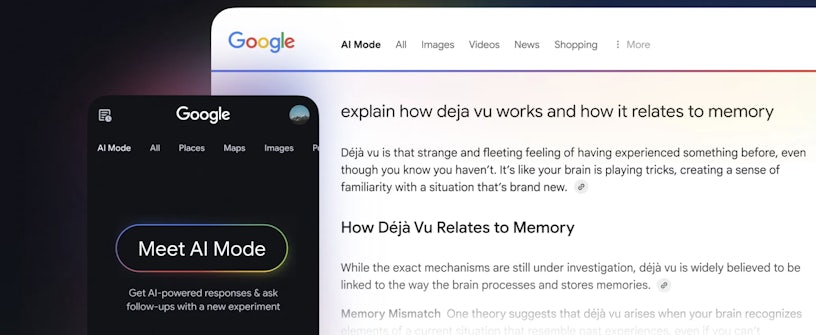
While Google aims to provide an AI answer whenever possible, it will revert to traditional results when it can’t verify the helpfulness and quality of the answers.
Google also has plans to make the answer’s content more visual, with images and videos being emphasised in current development.
What does this mean for you?
Advertisers that already use Performance Max, Shopping and Search campaigns with broad match (which includes the recently-added AI Max for Search) are eligible to have their ads appear on AI Overview and AI Mode. While this is currently in testing, it’s likely to scale, so it’s important for advertisers to stay up-to-date on changes and monitor their effects in the accounts.
Threads ads enabled by default in Meta Ads Manager
After initial tests in January, ad placements on the Threads platform have now been rolled out widely to advertisers. Starting in late April, this placement is now enabled by default when you use Advantage+ placements, but it is not yet compatible with every ad type.
What does this mean for you?
You now have access to Thread’s over 200 million users by default when you build an ad in Meta Ads Manager. Keep in mind that Threads ads aren’t yet compatible with every ad setting, so if you want to run ads on Threads, keep an eye on Meta’s announcements for a comprehensive list.
Pinterest journeys are changing
Pinterest has recently introduced two updates that are likely to change the way users explore the platform.
AI Label
Pinterest has introduced the AI label across its platform. Pinterest has faced backlash amongst users about the proportion of AI-generated content on the platform, which was leading to unrealistic expectations and problems for competing small businesses. In response, Pinterest now tags content generated by AI and allows users to reduce the amount of AI-generated content in their feed.
This tag is applied automatically to content that Pinterest detects as AI-generated through its metadata and image recognition software. Was one of your pins falsely flagged? Pinterest also has an appeals process for flagged images.
Importantly for advertisers, the AI label won’t show up on promoted pins. In order to see if an ad is AI-generated, users will have to click into the “Why am I seeing this ad?” disclosure to look for more details.
What does this mean for you?
If you’re running paid promotions on Pinterest, performance is unlikely to be affected by this change.
But if you’re also posting organically, your reach will likely be affected. Human-created images are likely to become more common in users’ feeds, while AI-generated content will likely see its reach limited.
Native Image Search
Pinterest has introduced Image Search directly into the platform. This helps users find visually similar images to what they’re already interested in, and change the search journey from keyword matching to visual exploration. It will also help users find items they like even when the product isn’t linked in the image. This is likely to change the users’ journey and affect how they discover your products.
What does this mean for you?
Keyword-less exploration makes it even more important to target your ads to the right audience and to leverage Pinterest’s AI-optimised targeting.
Google announces new features for Video & YouTube ads
During the recent Google Global Keynote, there was a lot of mention of the role of video, and especially YouTube, in the ad ecosystem. Following this, Google has announced new features for advertisers:
- New Video and YouTube placements – The YouTube masthead is now ‘shoppable‘, and Google is introducing more video placements across Search, Image Search, and Shopping.
- Interactive Shopping on cTV – Google ads on cTV will be able to show QR codes for instant conversions.
- Creator Partnerships Hub – Google is introducing a new way to find and collaborate with relevant influencers. Currently, this solution requires you to apply and have Google approve your application. This launch was accompanied by an announcement that partnership ads will soon also be available in DV360.
- Peak Points – Ads running on YouTube will now be shown at the “peak points” of the video, meaning that ads will show immediately after the points in the video that Gemini AI detects as having the highest rates of user attention.

Marketers are prioritising video as the most engaging format for content. These changes highlight that Google is following that trend, and making it as easy as possible for marketers to leverage attention into results.
What does this mean for you?
These new opportunities mean that you should more strongly prioritise video in your CPC content mix, not just for Social. The new Partner Hub promises to make UGC content easier to produce for smaller accounts, giving you a golden opportunity to start leveraging it further.
Spotify introduces ‘Ad Exchange’
The Spotify Ad Exchange is Spotify’s in-built solution for Programmatic Advertising. It can link to a variety of partner platforms (DV360, TradeDesk, LiveRamp), with ongoing plans to add more. Ad Exchange also allows you to work directly on Spotify, without the need for an external platform.
After its launch in April, there have been ongoing updates, such as the new integration with Magnite. Spotify promises more updates, both in adding more partner platforms (AdForm and Yahoo DSP), and the addition of podcast placements in the second half of 2025.
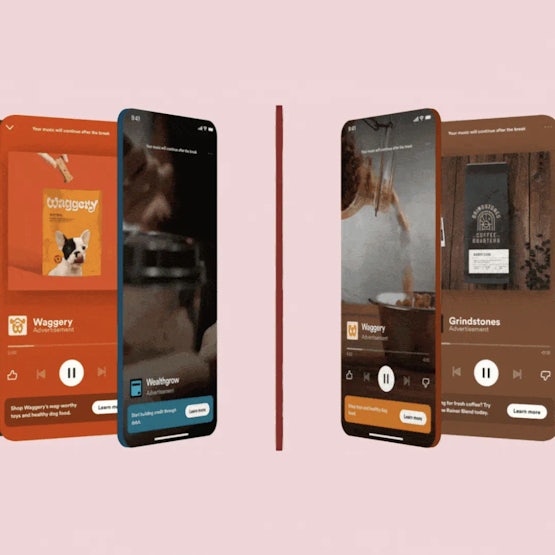
What does this mean for you?
Programmatic Advertising gives you access to audiences where they’re most likely to pay attention. It has traditionally been difficult to work with and understand, partly because of the fragmented nature of the market. By having access to advertise directly with Spotify (or with your already existing preferred solution), this can make programmatic advertising more accessible to less specialised marketing teams.
What’s on the horizon? (Other updates)
Twitter/X introduces 4k video – With this latest update, all Premium subscribers will now have access to upload 4k video onto the platform. This may be beneficial as this platform’s content is increasingly experienced in bigger screens.
LinkedIn quality of life updates – LinkedIn added new quality of life features for advertisers. The most recent is the direct integration of Canva into LinkedIn Ads. You can now create a design on Canva and, by connecting it to your LinkedIn, you can create ads directly from Canva. This follows from LinkedIn’s continued push towards video content on the platform.
Reddit Dynamic Catalogue Ads – After beta testing, Reddit Dynamic Product ads are now open to general availability. This ad type is a type of catalogue ad, and is aimed at advertisers optimising for direct product sales. If you have a catalogue, Reddit will automatically show users the products they’re most likely to buy.

